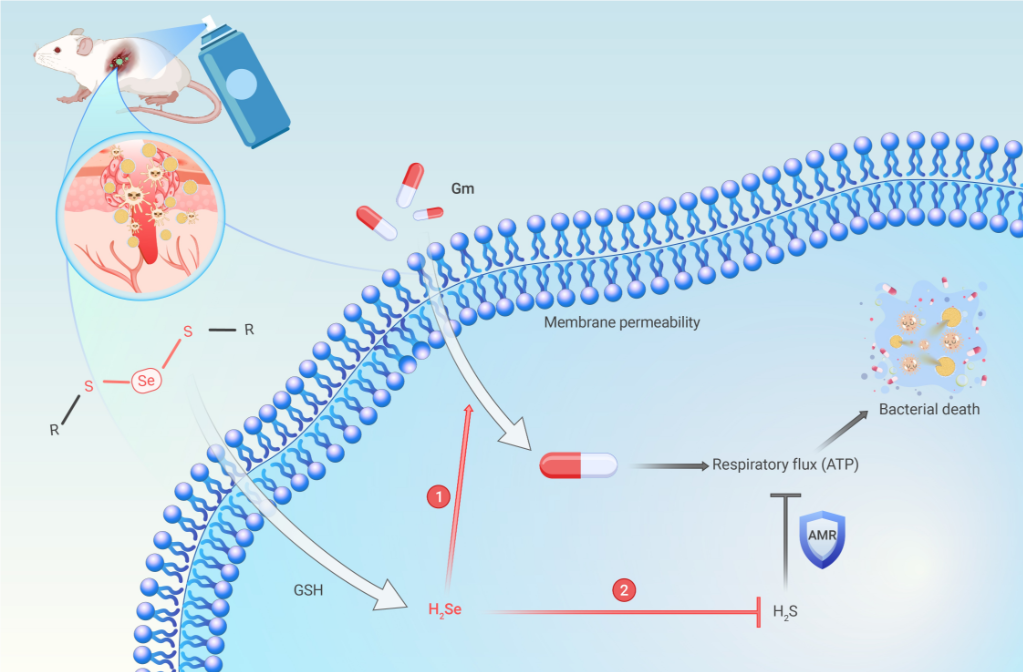Mengnan Liu1, Fanqiang Bu1, Guofeng Li, Wensheng Xie, Huaping Xu*, Xing Wang*
The Innovation Life.; 2024, 2, 100076
The hydrogen sulfide (H2S)-induced defense system is a crucial bacterial pathway that leads to antibiotic resistance. Herein, a unique S-Se-S molecule, namely, 2,2’-(selenobis(sulfanediyl))diacetic acid (Se-Acid), is first reported to relieve H2S-induced antibiotic resistance by acting as a hydrogen selenide (H2Se) donor. The S-Se-S molecular structure was formed using the carboxyl terminal as an electron acceptor. After being endocytosed by cells, Se-Acid effectively released H2Se molecules by reacting with glutathione (GSH). The released H2Se increased the endocytosis of antibiotics by promoting bacterial membrane permeability. Moreover, H2Se effectively reactivated the bacterial respiratory flux by functioning as an H2S disguiser. The synergistic effect of Se-Acid and Gentamicin (Gm) on H2S-induced antibiotic-resistant MRSA was proven on MRSAS+ wound infection model. Our results establish S-Se-S type molecules as potential tools for addressing the challenge of H2S-induced antibiotic resistance and reducing the risk of antibiotic resistance.

